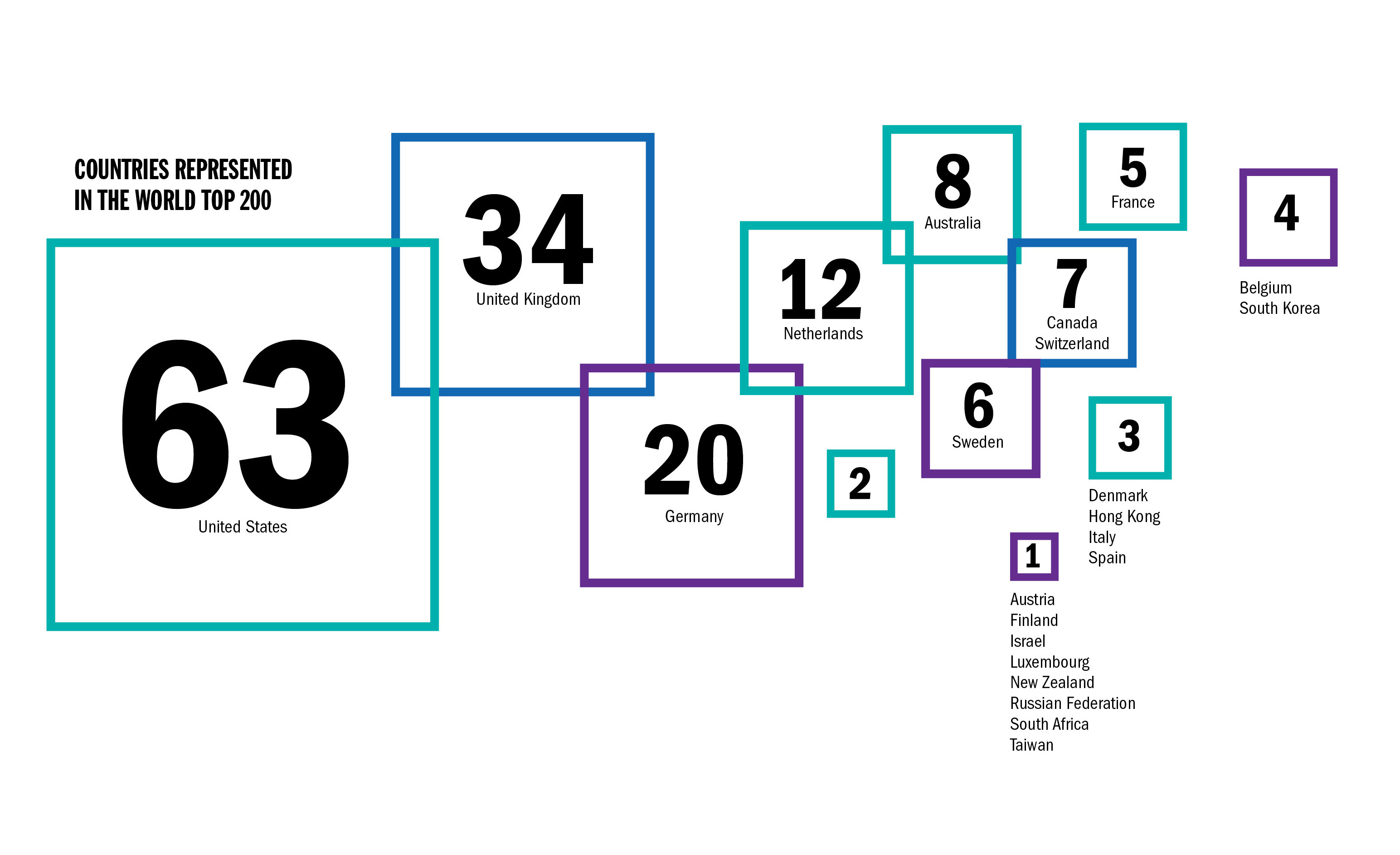Universities in mainland Europe go head-to-head with the UK
With UK tuition fees and visa restrictions becoming more prohibitive, rival universities in mainland Europe, ranked similarly to UK universities in the World University Rankings, are competing to attract international students.
Share
The best universities in the UK are going head-to-head with rivals in Germany, Switzerland and the Netherlands in the Times Higher Education World University Rankings 2015-16.
Many UK institutions in the top 100 are ranked just one or two positions away from those in mainland Europe that offer study opportunities at a fraction of the cost.
The proportion of international students at UK universities is still significantly higher at each institution compared with its continental rivals, but with immigration conditions in the UK likely to become even stricter, this could soon change.
- See all the top universities in the Netherlands
In fact, UK universities can no longer boast the best environment and resources for international students, since some mainland European institutions have higher staff-to-student ratios and income per student.
According to Freddy Weima, Director-general at EP-Nuffic which works on internationalising Dutch education, the Netherlands is rivaling other countries in part due to its fantastic success in the THE World University Rankings, which are well-used in places like India, China and Indonesia.
"Even though we have a good reputation for the right reasons, we also think we can do better," he said.
Holland's Minister of Education recently launched a four-year plan to improve the teaching quality at Dutch universities even further, by increasing the number of teachers and creating interactive learning opportunities.

ETH Zurich–Swiss Federal Institute of Technology Zurich, snapping at its heels in ninth position.
Although 51 per cent of the student population are international at Imperial, the gap is closing quickly with 37 per cent international students at ETH Zurich, no doubt attracted by fees of less than £1,000 per year.
On average, an international student at Imperial will pay £30,000 more for the same degree course than they would at ETH Zurich.
Lino Guzzella, President of ETH Zurich has always managed to attract excellent students and scientists both from Switzerland and abroad.”
But he added: “Increasing our already high proportion of international students is not a priority.
“ETH is well-known for its excellent teaching, for leading the way in fundamental research, and for the direct transfer of new findings into practice.
“It offers students an inspiring learning environment: innovative concepts and projects in teaching promote both classical knowledge and inter-disciplinary thought.”
Back in the UK, students at the University of Amsterdam in the Netherlands (#58).
Manchester charges tuition fees for non-European Union students at between £15,500 and £20,000 – more than double the fees at the University of Amsterdam, despite Manchester employing fewer staff members per student.
Just one of the head-to-head rivalries features a UK university ranking below a European challenger in the World University Rankings.
With a quarter of its student population from overseas, the Leiden University, in the Netherlands, in attracting international students. But Bristol ranks two places below Leiden, and costs half the price.
Like many other universities in the Netherlands and Germany, Leiden offers degrees taught in English across a range of disciplines, including art history, medicine and political science.
Mr Weima said: ""Compared to other, non-English speaking countries, the Netherlands has the most English language programmes: almost 2,500 in total.
"But studying at university is also a cultural experience. Holland is a very nice country to live in, and many of our university towns are very attractive. "
The Netherlands looks set to compete with the UK as a destination to study abroad, certainly if the availability of cheap, English-language degrees at top-ranked universities is anything to go by.
UK universities v European universities
|
University |
Country |
WUR 2015-16 rank |
Number of students per staff member |
International students (%) |
Income per student (£) |
Average annual tuition fee: non-EU undergrad (£) |
|
UK |
8 |
11.7 |
51% |
£54,699 |
£31,200 |
|
|
ETH Zurich-Swiss Federal Institute of Technology Zurich |
Switzerland |
9 |
14.7 |
37% |
£55,779 |
£863.5 |
|
UK |
27 |
11.4 |
37% |
£27,435 |
£18,150 |
|
|
Germany |
29 |
15.5 |
13% |
£35,001 |
£83 |
|
|
UK |
56 |
15.3 |
34% |
£23,670 |
£23,500 |
|
|
Netherlands |
58 |
14.4 |
11% |
£22,804 |
£11,889 |
|
|
UK |
69 |
14.0 |
25% |
£25,643 |
£23,133 |
|
|
Netherlands |
67 |
17.1 |
10% |
£18,215 |
£10,194 |
|
|
UK |
70 |
15.7 |
24% |
£18,296 |
£16,900 |
|
|
Netherlands |
71 |
18.9 |
18% |
£19,078 |
£9,200 |
